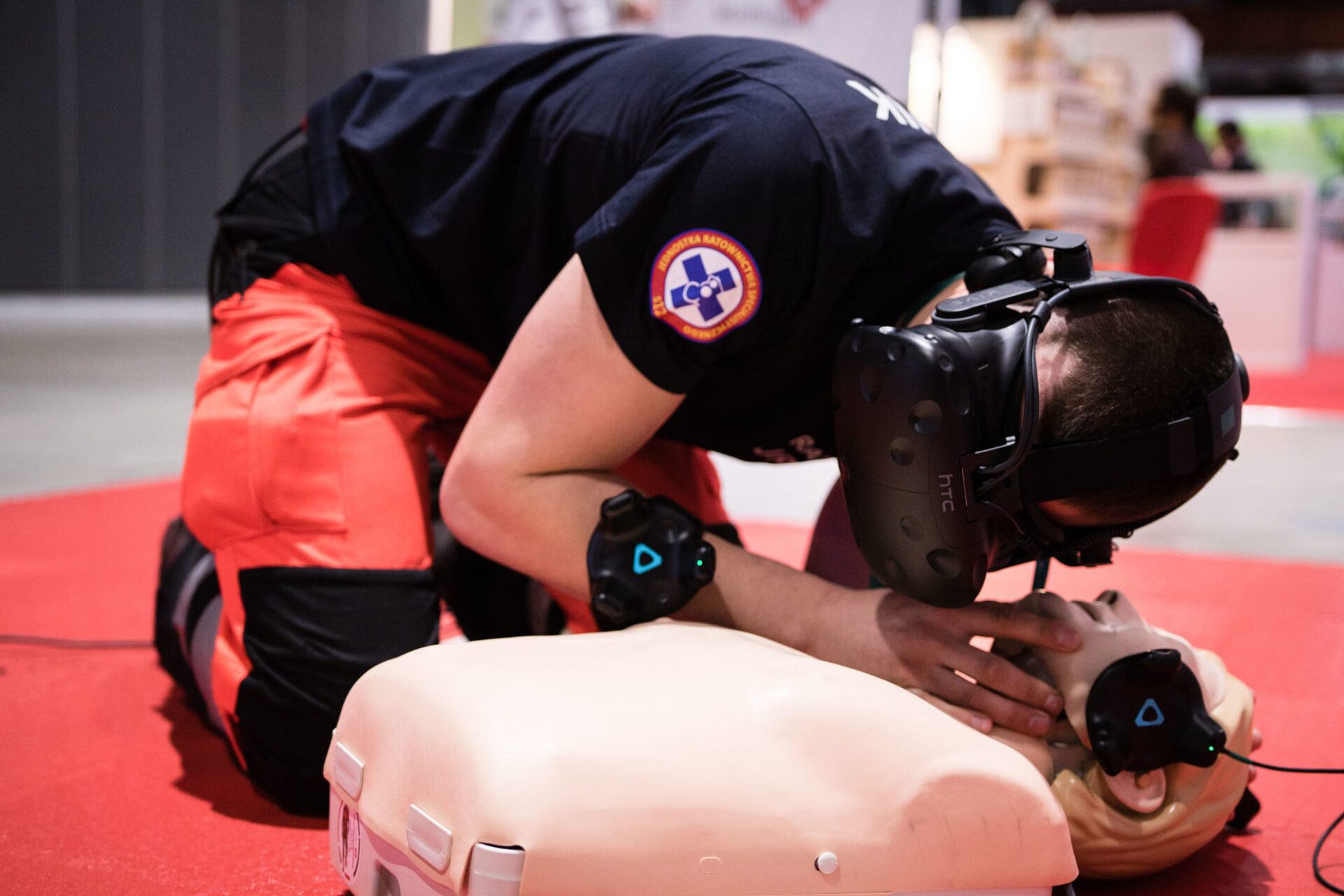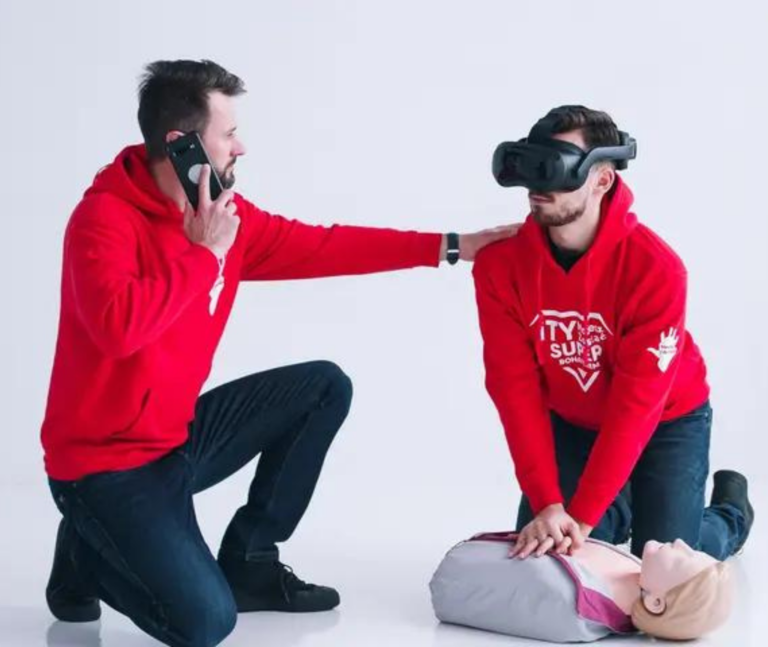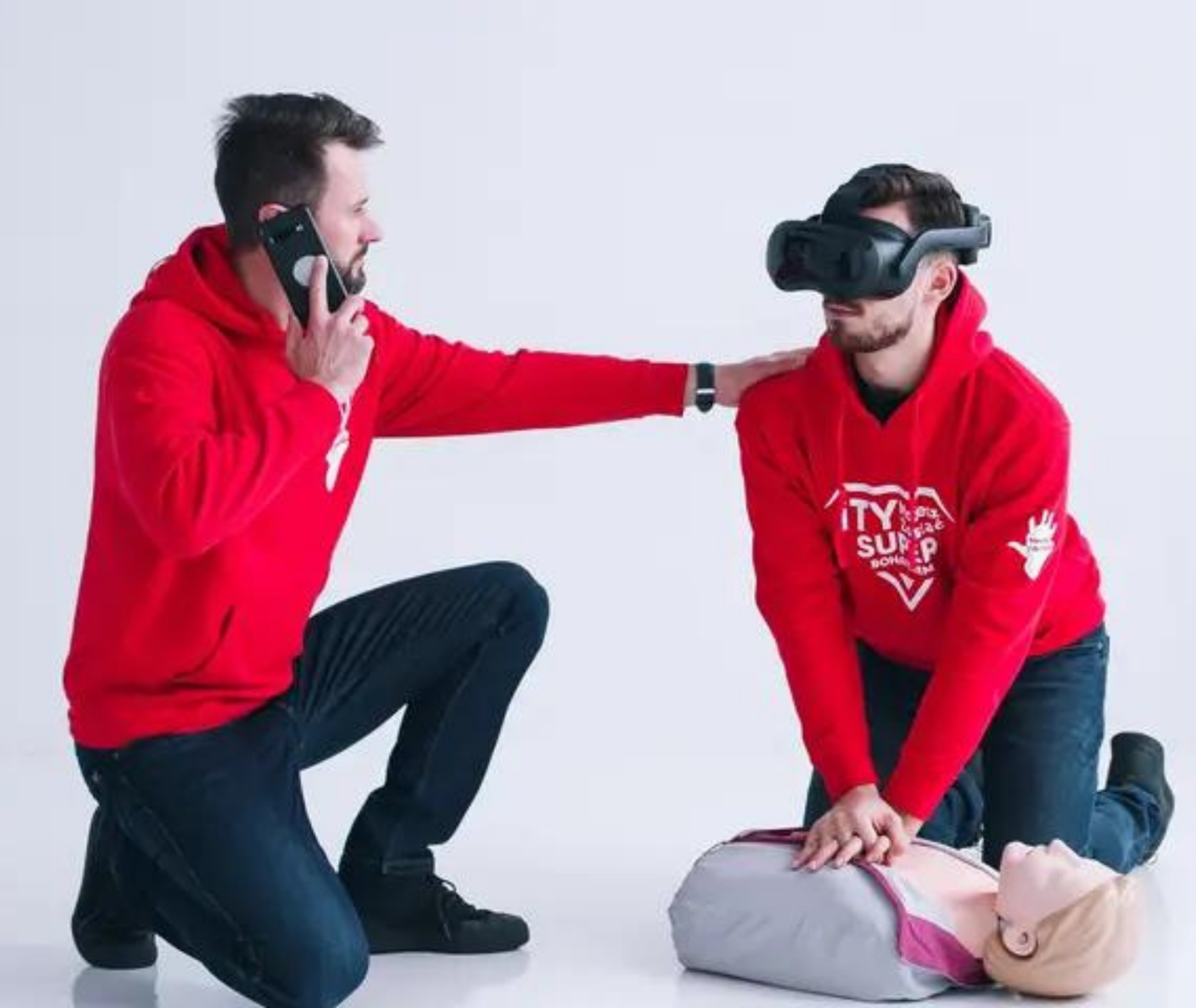Technologia VR pozwala na testowanie różnych sytuacji przy bardzo realistycznym odzwierciedleniu warunków panujących w danym miejscu. Dzięki temu, w ramach stworzonego przez wrocławską firmę 4 Help VR kursu pierwszej pomocy uczestnicy nabywają, ćwiczą i utrwalają nowe umiejętności. Pomysłodawcy rozwiązania nie mają wątpliwości, że doświadczenie czegoś w rzeczywistości, którą mózg odbiera jako realną, bardzo korzystnie wpływa na szybkość reakcji i pewność siebie, a co za tym idzie – na skuteczność udzielanej pomocy.
– Nasz system obejmuje zagadnienia z zakresu podstawowej pierwszej pomocy. Program nie ma drastycznych elementów, jest uniwersalny i może służyć każdemu, nawet czterolatkom. To wyjątkowo przyjazne środowisko. – Grzegorz Kobuszewski, firma 4 Help VR
Nauka pierwszej pomocy krok po kroku
Szkolenia prowadzone są na zasadzie symulacji rzeczywistych sytuacji. Wrocławski startup organizuje zajęcia zarówno dla dzieci czy firm, jak i funkcjonariuszy straży pożarnej i zawodów pokrewnych. Przewodnikiem po wykreowanym przez 4 Help VR świecie jest Paramedicus – postać, która prowadzi uczestników przez wszystkie etapy kursu.
– VR łączy dwa bardzo istotne elementy – nie tylko uczy nas pierwszej pomocy i ocenia nasze działania, ale również pokazuje nam pewne wyobrażenie o danej sytuacji. Co istotne, uczestnicy kursu są na bieżąco informowani czy wykonywany przez nich ucisk klatki piersiowej jest prawidłowy. W ten sposób zwiększamy jakość kształcenia z zakresu pierwszej pomocy. Proces zapamiętywania za pomocą VR jest na dużo wyższym poziomie. – Grzegorz Kobuszewski, firma 4 Help VR

Podstawowa pomoc przedmedyczna
Choć technologia VR jest bardzo zaawansowana, sam kurs jest łatwy w obsłudze. Wystarczy ubrać specjalistyczne gogle, podążać za instrukcjami Paramedicusa, uratować życie poszkodowanemu w wirtualnym świecie i zweryfikować w ten sposób swoje umiejętności. Program przenosi uczestników w fikcyjne miejsce zdarzenia i prowadzi szkolenie na dedykowanym fantomie. Kurs obejmuje między innymi resuscytację krążeniowo-oddechową z wykorzystaniem defibrylatora AED czy postępowanie z osobą nieprzytomną oddychającą, która wymaga ułożenia jej w pozycji bocznej ustalonej.




